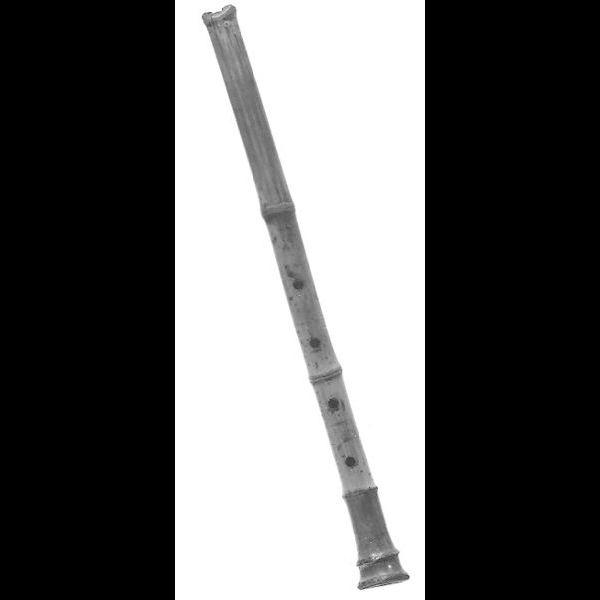Rgya-Gling
Rgya-gling (shawm) may be used in temple orchestras or may alternate with dung-chens for the morning and evening calls from the monastery roof. Like other Tibetan wind instruments this double-reed example is played in pairs. The reed (not present) fits onto the thin metal tube (staple) atop the ornate metal pirouette (disk) that slips into the small end of the wooden tube. A monk takes the reed completely into his mouth and presses his lips against the disk provided above the pirouette's bulbous assemblage. Double-reed instruments like the European oboe used two reeds that are secured at their bases to produce a loud, penetrating and "nasal" sound.
Artwork Details
- Title: Rgya-Gling
- Date: 19th century
- Geography: Tibet
- Culture: Tibetan
- Medium: Copper, turquoise
- Dimensions: L. 24 × Diam. 3 3/16 in. (61 × 8.1 cm)
- Classification: Aerophone-Reed Vibrated-double reed
- Credit Line: The Crosby Brown Collection of Musical Instruments, 1889
- Object Number: 89.4.1442
- Curatorial Department: Musical Instruments
Audio

9362. Shakuhachi
0:00
0:00
We're sorry, the transcript for this audio track is not available at this time. Please email info@metmuseum.org to request a transcript for this track.
More Artwork
Research Resources
The Met provides unparalleled resources for research and welcomes an international community of students and scholars. The Met's Open Access API is where creators and researchers can connect to the The Met collection. Open Access data and public domain images are available for unrestricted commercial and noncommercial use without permission or fee.
To request images under copyright and other restrictions, please use this Image Request form.
Feedback
We continue to research and examine historical and cultural context for objects in The Met collection. If you have comments or questions about this object record, please complete and submit this form. The Museum looks forward to receiving your comments.